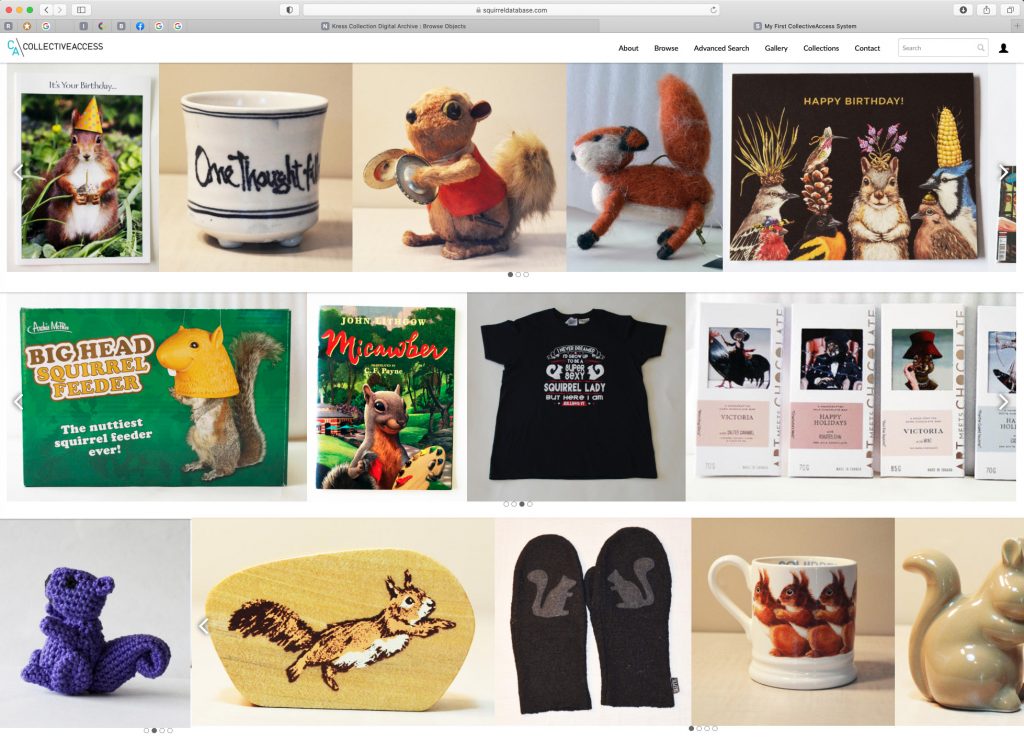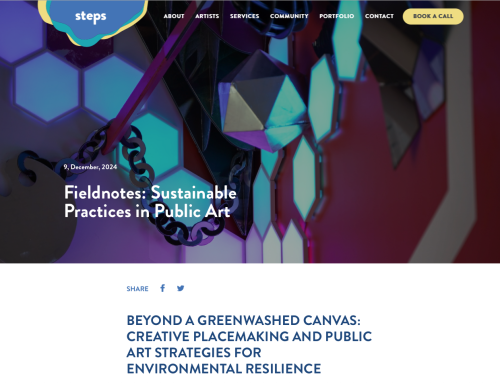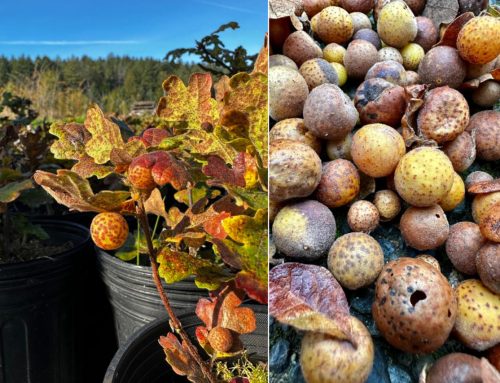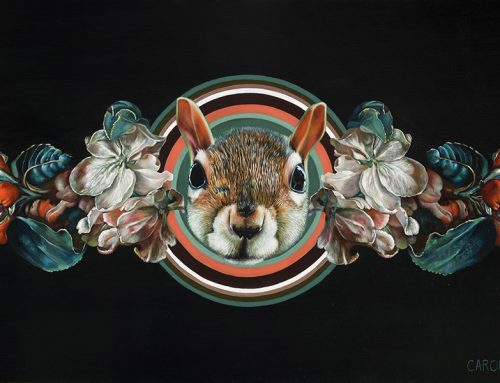Launched!
URL: www.squirreldatabase.com
The Squirrel Collection Database (#squirreldatabase) is a database of objects, photos, and videos containing squirrel imagery gifted to me primarily from 2007 to the present day. One entry, however, is dated from almost a decade earlier. When my grandmother died in 1998, she bequeathed me a vintage 1970’s Chalkware squirrel-shaped coin bank. Little did I know then, a whole decade prior, that this tchotchke would be a harbinger of collaboration and the squirrels to come.
In part, my artistic research practice documents my alliance to squirrels through artwork – thus, Squirrealism was born. Squirrealism developed into a method of art-making that channels conceptual and material connections between the species. These artworks have inadvertently affected the general public’s desire to collaborate with me. As a result, hundreds of squirrel-themed objects and digital imagery (links, memes and news stories) have been sent to me by snail mail, email, and direct message (Facebook, Twitter, and Instagram). As part of my art practise, I am cataloguing these squirrel artifacts into a MySQL database using an open-source, user contributed installation profile by CollectiveAccess. Read more below.
Additionally, after being gifted a squirrel artifact, I photograph the object and post it to Instagram @carollyneyardley using the search words: #squirreldatabase
The Squirrel Collection Database was made publicly accessible in the Spring 2022 through an online searchable database (squirreldatabase.com) The online collection provides me (and others) access to the materials in one repository to define future research agendas, and disseminate how squirrels are portrayed in art history and visual culture. It also helps me think about the liveliness of objects, and how a community builds a collection together-apart.
Special thanks
The squirrel database has been made possible by folks like yourself. Folks who came across a squirrel-themed object while out walking somewhere, squirreled it away, and gifted to me. The technology consultation and database configuration of the #squirreldatabase project is by Graham Nott, and the photography and data entry for Phase 1 was performed by Naomi Harding. Huge thanks to them both for helping bring this project to fruition.
Missing info
A couple of years passed before I realised there was a continuation of squirrel gifts coming my way. Therefore, in those early years, I did not take note of who gifted me an object. The objects gifted by an unknown person are entered as gifted by Anonymous. If you believe you gifted me a squirrel item, and were not credited for it, please click on the object and send me a message, or note the Accession Number and contact me through the online form on the contact page.
Phase 2
Please note there are hundreds more objects to be entered. If you do not see your gifted object published, it is because we are still working on photographs and data entry! Thank you for your patience.
Collective Access Database
My project began with deciding on the best open-source software that would fit my needs, which is to catalogue many physical objects in order to box them up for storage and still be able to access the images and text descriptions (and throw away yellow sticky notes). I tossed around the idea of entering the data into an .xlsx – Excel workbook or .numbers – Apple’s iWork office suite, but decided that I might lose some data or some may need to be re-inputted during import into an online software solution. Time-wise it made sense to enter the data directly into the chosen online software with existing category configurations.
Other considerations:
Software support, category config, data imports, exports, backups, and linking to my existing website at www.carollyne.com, plus ease of navigation interface for online visitors.
My desired object categories included:
- accession number
- item title
- quantity
- gifted (name) or purchased (cost)
- date of acquisition
- description, dimensions
- multiple photos
Specifications
After some research, and with the assistance of Graham Nott, the software I selected for my project is by CollectiveAccess. This is free open-source software for managing and publishing museum and archival collections. It is a software for describing all kinds of things and allows you to create catalogues that closely parallel your needs without custom programming.
CollectiveAccess has a selection of user-contributed installation profiles, some of which are based on standard and some are completely custom.
The options for the installation wizard presented the following choices:
EBUCORE V1.4 2013
The configuration library I chose was listed as selection of user-contributed installation profiles under Institutional Archives and Special Collections.
New Museum of Contemporary Art, New York, NY, USA.
Metadata Standards: Dublin Core
Object Types: collections, datasets, events, images, interactive resources, moving images, physical objects, services, software, sounds, texts
If you are interested in further reading visit this page:






![Squirrealism: Psychometry (IIC) in artistic practice. [Online presentation] International Multispecies Methods Research Symposium, University of Saskatchewan, Saskatoon, Canada.](https://www.carollyne.com/wp-content/uploads/2023/06/Screen-Shot-2023-06-18-at-9.16.32-PM-copy-1-500x383.jpg)